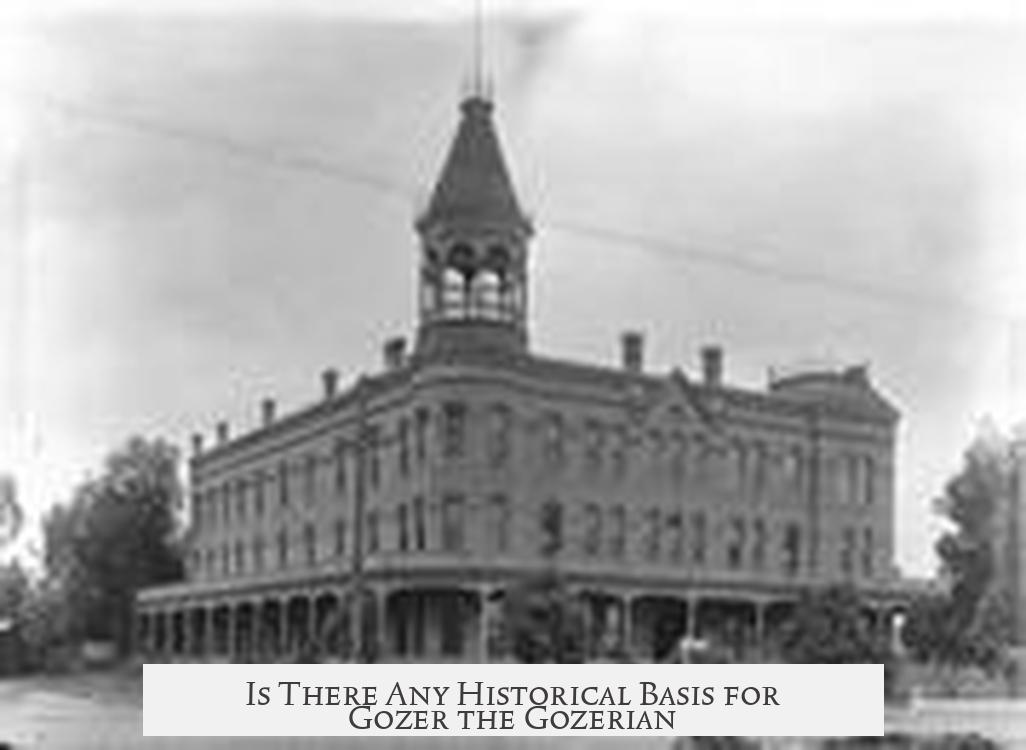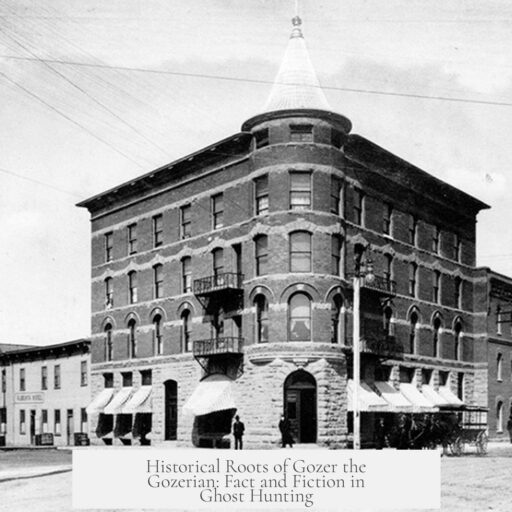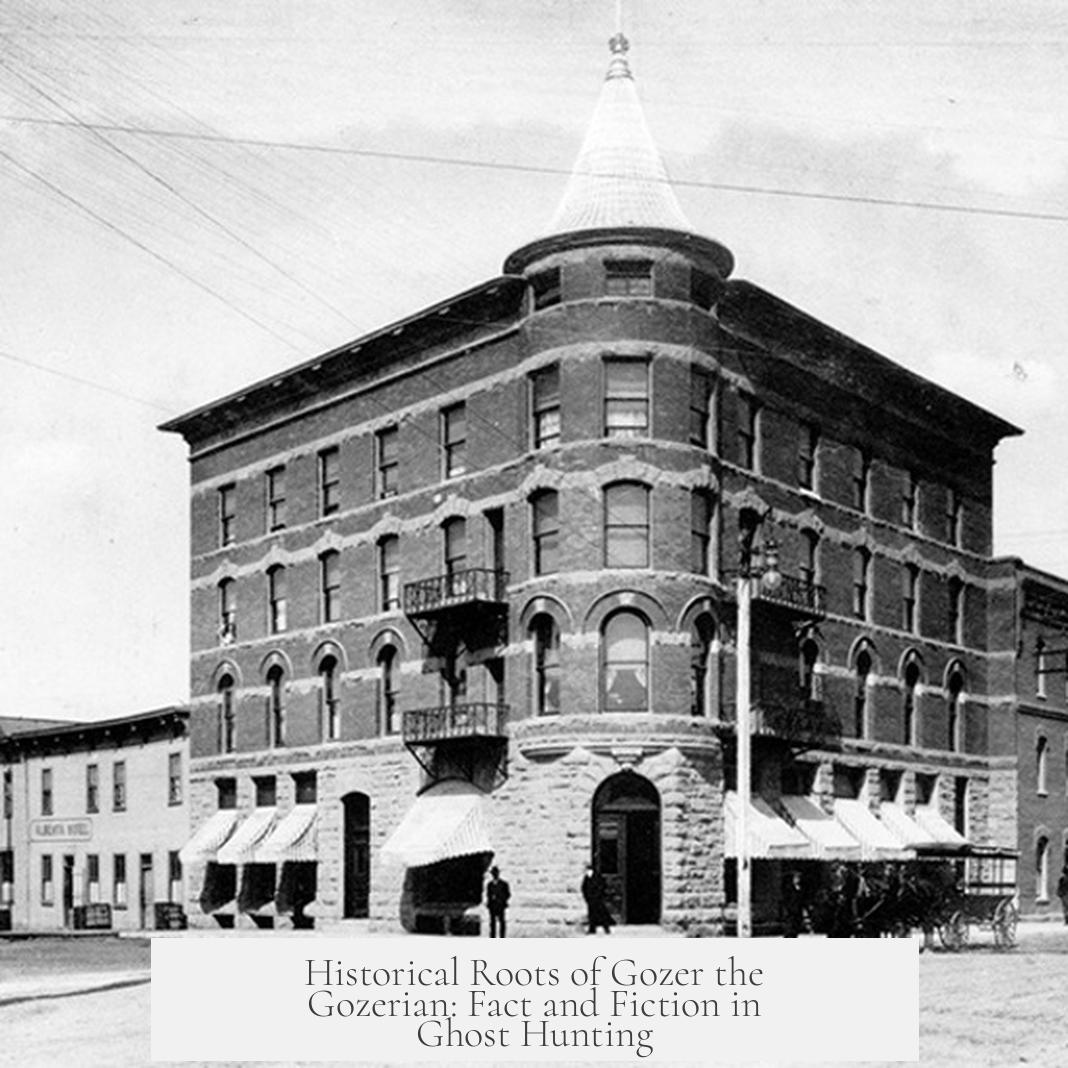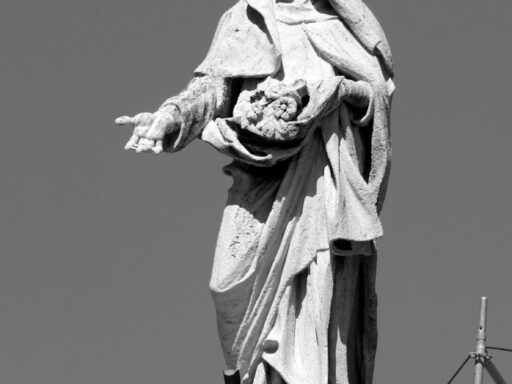Gozer the Gozerian does not have a direct historical basis but rather emerges from a blend of mythological references, fictional elements, and real-world inspirations. While the character is steeped in the language of ancient mythologies, no concrete historical or mythological figure named Gozer exists in documented ancient cultures.
The film script for “Ghostbusters” introduces Gozer, Zuul, and related entities with details that suggest an ancient mythological context. Gozer is described as a powerful deity revered by ancient peoples such as the Sumerians, Mesopotamians, and Hittites. Characters in the film speak of Gozer’s minions, Zuuls, and the mystic roles of Vinz Clortho (Keymaster) and Volguus Zildrohar (Gatekeeper), using elaborate titles like Lord of the Sebouillia.
The script mentions that Gozer assumes various terrifying forms, including the “Traveler,” a large and moving “Torg,” and a giant “Slor.” These terms and descriptions sound mythological but are creations specific to the film’s universe. No ancient texts or archaeological sources mention these forms or figures.
| Aspect | Historical/Scriptural Evidence |
|---|---|
| Gozer, Zuul, Vinz Clortho, Volguus Zildrohar | Fictional; no matches in Hittite, Sumerian, or Mesopotamian mythology. |
| Torg, Slor, Sebouillia, Vuldrini | Invented creatures and groups for storytelling; no historical basis. |
| Sumerian & Mesopotamian Apocalyptic Concepts | Exist but differ from film’s representation; no cyclical apocalyptic cult specifically dedicated to Gozer. |
Sumerian religion and other ancient Near Eastern beliefs include apocalyptic themes and resurrection myths, such as the death and return of the god Dumuzi or the descent of Inanna to the underworld. The Epic of Gilgamesh contains narratives of deluge and destruction. However, these do not directly connect to Gozer or the fictional cults featured in the movie.
Most of the names used—Gozer, Zuul, Vinz Clortho—do not appear in any known historical or mythological record. The film script concocts a detailed mythos around these invented terms, combining real ancient societies with fantasy elements to create a convincing backstory. Even supposed cult names like the Sebouillia or McKetrick supplicants are fictional. The so-called Tobin’s Spirit Guide mentioned in dialogue is not a real text.
Gozer’s story includes narrative devices reminiscent of Judeo-Christian traditions, such as prophetic signs, messianic figures (Keymaster and Gatekeeper), and apocalyptic destruction. This creates a deliberate parallel to familiar religious expectations while fitting the narrative needs of the film.
The historical inspiration for Gozer, according to actor and writer Dan Aykroyd, lies partly in a combination of personal observations and reported supernatural events. Aykroyd points out that Gozer was inspired by a Gozer Chevrolet dealership name, adding a quirky real-world link. More importantly, the name Gozer is drawn from accounts related to the Enfield Poltergeist case. During this infamous English haunting, unexplained writings, including the name Gozer, appeared on walls and objects. This haunting influenced both the horror genre and film creators, providing a semi-real foundation for a fictional demon.
The Enfield Poltergeist, documented in books like This House is Haunted: The True Story of a Poltergeist (1980), gained public attention. The poltergeist activity included strange phenomena such as object movement and mysterious markings. Using “Gozer” connected the film’s demon to a real-world haunting, enriching the narrative without claiming strict historical authenticity.
The rise of occultism, spiritualism, and esoteric societies in the early 20th century created a cultural backdrop that parallels the fictional cult of Gozer in the film. Groups like Theosophists and the Hermetic Order of the Golden Dawn explored mystical knowledge and supernatural beliefs. This historical context helped frame Gozer’s cult within a plausible occult setting without authentic ancient origin.
- Gozer is a fictional deity inspired by mythological motifs and real hauntings, not an ancient god.
- Names such as Zuul and Vinz Clortho are original creations with no basis in ancient mythology.
- References to Sumerian, Mesopotamian, and Hittite cultures are used loosely to evoke antiquity.
- Gozer’s origin partially stems from the Enfield Poltergeist case, where “Gozer” appeared during paranormal events.
- The film narrative borrows from apocalyptic and messianic themes common across many religions.
- The cult imagery parallels early 20th-century occult movements rather than ancient practices.
Is There Any Historical Basis for Gozer the Gozerian?

Gozer the Gozerian, the enigmatic villain from the iconic Ghostbusters film, does not have a true historical basis but draws loosely from ancient mythologies, occult motifs, and real-life paranormal stories. Let’s unpack this supernatural mystery with a pinch of history, a dash of fiction, and a splash of Hollywood creativity.
First thing’s first: Gozer’s origins in the film script cleverly reference ancient civilizations like the Hittites, Mesopotamians, and Sumerians. These cultures worshipped numerous gods and demi-gods, but there’s no actual record of Gozer or his minion Zuul in their mythologies. In a memorable script exchange, Peter Venkman explains, “Gozer was very big in Sumeria. Big guy.” This line tempts viewers to think Gozer’s a documented deity. However, that’s Hollywood shorthand for borrowing from the rich soil of ancient myth, then planting an original, high-concept creature in its place.
Take the characters Vinz Clortho, the Keymaster, and Volguus Zildrohar, Lord of the Sebouillia—these names sound exotic and ominous but actually don’t appear in any genuine historical or mythological texts. The film invents groups such as the Sebouillia and cultic rites like the “rectification of the Vuldrini,” which sound suitably ancient and mysterious but are pure fiction. The mythological creatures—the Torg, Slor, Shuvs, and Zuuls—all serve the movie’s storyworld but have no basis in historical documenation.
Interestingly, the idea of an apocalyptic entity like Gozer isn’t far from old apocalyptic themes found in real religions worldwide. Ancient Sumerian religion doesn’t have a cyclical apocalypse akin to Hindu or Aztec cosmologies, but the Epic of Gilgamesh contains an apocalyptic tablet, and there’s the motif of dying and resurrecting gods such as Dumuzi. These ideas provide a background theme of destruction and renewal, creating fertile ground for fictional stories like Gozer’s. So, while Gozer isn’t historical, a story about a world-ending god or entity fits well in mythological storytelling traditions.
What about the cult associated with Gozer, led by Ivo Shandor in the film? This fictional group reflects early 20th-century occult movements like the Theosophists and the Hermetic Order of the Golden Dawn. These groups sparked popular fascination with Spiritualism, Egyptology, and secret knowledge. The film’s portrayal nods to real-world groups that combined mysticism, secret rites, and apocalyptic beliefs—making the idea of a cult that summons a world-destroying entity more believable in a historical context.
True Story Behind the Name Gozer: Ghost Hunting Meets Ghost Busting
Here’s where things get delightfully spooky: Dan Aykroyd, one of the creators of Ghostbusters, revealed that Gozer’s name actually originates from a creepy English haunting. During that haunting, the name “Gozer” mysteriously appeared scrawled on walls and objects. This haunting was the documented source for another horror film, Poltergeist. So, Aykroyd did something clever by borrowing a real ghost story element and turning it into a cosmic baddie.
The specific haunting he references is known as the Enfield Poltergeist, a famous case involving poltergeist activity in the UK during the late 1970s. Ghostly phenomena like objects flying or voices appearing were reported—making it a fascinating, eerie real-world inspiration. So while Gozer is a fictional creation, its name and eerie feel are rooted in paranormal lore, lending the film credibility in the supernatural stakes.
Putting It All Together: Fiction Woven from Fact and Myth
What this boils down to is a brilliant blending of fact, fiction, and playful invention. Gozer is not a figure you’ll find in any history book or ancient tablet. Instead, he’s a pastiche: elements inspired by actual mythologies and occult traditions combined into a richly textured character. The ancient-sounding names and cult-like rituals add depth and mystery, making Gozer feel authentically alien and ancient—something that feels plausible in a ghost story but remains purely the stuff of fiction.
It’s also worth noting why this matters beyond nerdy trivia. Ghostbusters created a monster that feels legendary. It has enough roots in genuine mythology and paranormal tales to make audiences buy into the terror—and humor—of the story. The creators leveraged existing apocalyptic motifs, cult imagery, and ghostly lore to craft an original demon that could stand alongside the giants of horror and fantasy.
So, next time you watch Ghostbusters and hear about Gozer and the Keymaster, remember: you’re witnessing a clever cocktail of ancient myth inspiration, 20th-century occult trends, and genuine paranormal mystery. It’s a story that speaks to our love for the unknown, blending fact and fiction so smoothly you might just believe an ancient Gozerian cult once roamed the earth—until the Ghostbusters come knocking, proton packs ready.
Ready to dive deeper? Explore more ancient myths, paranormal cases, and occult history to see how many modern monster legends grow from real seeds. You might find that the best stories live in that blurred space where history’s shadow meets imagination’s light.




